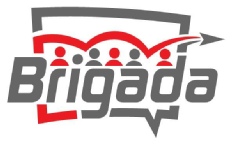If you’re thinking about working with a translator at an upcoming meeting or conference, make sure you meet, in advance, with the translator. If there are emotional components to your message, be sure to walk through those before the message or class. For example, if you start talking about emotions ‘flooding’ your soul, the translator might start talking about ‘a lot of water.’ You get the idea. Also, go over the Scriptural principals that relate to the teachings. And, it goes without saying, make sure that the examples and exercises are culturally applicable. If the material is not culture-appropriate the effect is lost. Share all handouts, diagrams, and Scriptures. These might require extra time.
Do you have other insights? If so, just click in the Comment box following this item in the web version.
(Also, thanks Jan, a worker with Co-Laborers, for sharing these items. And thanks, also, to your friend Penny, who connected us.)












Maybe a general rule of thumb: If it’s not in scripture, run it by the translator. Jokes, contrived alliterations, movie or political triviata – all can so easily go wrong. Don’t just recycle illustrations you’ve heard without thinking them through a bit. I watched one poor guy struggle when the speaker used “I-beam” in an illustration. He couldn’t figure out if he should say I as in me, or eye…
Soooo important! Check the translation do key words – the message about praise, worship and adoration which were all the same word in Lingala wasn’t so effective!
We also find that negatives and contractions are difficult; if it comes out positive it gets quite confusing to the listeners. You will be understood much better if your translator can see your face.
Check that scripture references line up, the numbering of verses can be different in other languages/countries.